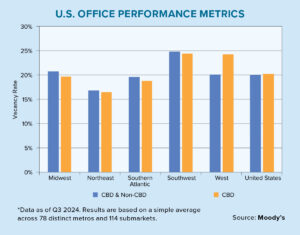Company branding is really important. Customers shop for brands, prefer some brands over others and can remain loyal to a brand for a lifetime. The brand represents a customer’s past experience with a company. A brand distinguishes an organization or product from its rivals in the eyes of that customer.
In the commercial real estate lending business, you want to set yourself apart from the competition. You want your company, your brokers and loan officers associated with a quality brand that provides a commercial real estate loan product to a consumer.
Establishing a brand is a process. It involves taking stock of who you are as a company, carefully watching for changes and opportunities in the marketplace, and using specific tools and technology to get your message across. The process of creating the successful brand can be broken down into six simple steps.
Target marketing
Step one is doing the research. Study your target audience. You will need to define where you plan to do business and also research the demographics of that area. Look at your current customer base to determine the key factors that led to successful transactions in the past. Why did the customer choose you or your company? Study your competition to determine how and why they are capturing market share.
This information is readily available via simple online searches for the types of commercial real estate loans or geographic areas you are targeting. The information will pop up on the first page of any search engine and clearly communicates where a competitor’s marketing dollars are being spent. Where their dollars are going usually communicates the target market and types of loans being closed successfully by the competition. Finally, you should evaluate your own product offerings. This will narrow your target audience and determine your target market.
Determine your mission
Step two in creating your brand is writing a personal mission statement and company mission statement. These critical steps should reflect your personal and company values. What is important to your target market and what is important to you? Low rates, fast service, integrity, honesty, profitability, work environment and providing customer value are a few points to consider when crafting personal and company mission statements.
It also may be helpful to consider the mission statements of your competition. What is important to the companies you compete with for business and what is important to the customers they serve? Also, make sure your personal and company mission statements convey your personal and company values clearly and concisely.
Create value
Your brand also will need to convey to customers any offerings that the customer can’t get from your competition. A value-add product offering is another key feature of a successful brand. It may include a rate or value focus, exceptional terms, fast loan closing, no-documentation or low-documentation products, or other loan offerings that differentiate you from the competition.
Online search engines can be very useful here as well. Your competitors’ product offerings and terms are available online. Look for gaps in your competition’s services. What are they not providing to the customer? The competition, for example, may not offer stated- income loans or bridge loans on certain types of commercial real estate assets. This can become a niche market for your company.
Choose a look
Another critical step in branding involves presentation. You will need to pick a company name, then create a slogan and logo. The company name introduces your business to the world and creates a long-lasting first impression. It should speak to your industry and convey a characteristic that distinguishes you from your competition. A company name should be memorable and easy to speak aloud.
One aspect of branding that can’t be overlooked is the colors that you associate with your company. Colors define the look of your brand and also convey a feeling. It is no secret that fast-food companies use a lot of red in their logos and on their buildings. Review some color-psychology charts online and choose colors that convey a feeling to support your mission statements, product offerings and the features that distinguish your company from the competition.
A professional company that specializes in branding also can help you produce a company name, slogan and logo design. It is also wise to seek competent legal counsel during this process to ensure there is no infringement on another company.
Go to market
In today’s fast-paced electronic age, a well-designed website with mobile capability is the foundation of a good brand. Everything you do and every marketing dollar spent should drive traffic to your website or phone number. A professionally designed website with mobile capability is money well spent, and it should clearly convey your brand’s product offerings. Social media platforms and search engine optimization (SEO) are widely used by well-branded companies and are affordable for a newly branded business.
It also is critical to manage your online reputation. Most consumers shop for services online and read the reviews about companies. Although you can’t always control what is posted online about you or your company, you can manage the response. Good brands respond quickly to both positive and negative feedback. A consumer wants to see a brand that cares about the customer experience.
Evolve and adapt
Another important part of branding is keeping up with the times. Products, pricing, delivery and the capital markets will always change. Each year, your company should evaluate its target market, mission, value proposition and online presence. Watch your competition, too, especially those companies with large marketing budgets. Look for underserved markets.
Maybe your competition doesn’t do loans of less than $3 million, and that may become a niche for your business. A successful brand often seeks the road less travelled. Find a geographic area where there is less competition, or a product offering not being offered in your area.
• • •
Successful brands evolve and adapt to market changes, enabling them to remain successful over time. The past two financial crises took place in 1998 with the fall of subprime lenders, followed by 2008 and the collapse of the financial markets.
In both cases, there were many companies that were thriving prior to the crisis and were forced to close their doors shortly thereafter. Many companies, however, capitalized on the downturns and emerged from the crisis much stronger than before. These companies were able to rapidly evolve and adapt their brands. This should serve as an example to all companies.
Author
-
Darin Young is president and CEO of Popular Commercial Lending Group, a Salt Lake City-based commercial and agricultural mortgage banker and correspondent lender/servicer. Young has been in that role since 2008 and has a bachelor’s degree in business management from Brigham Young University. He has 27 years of finance experience, including management experience with Norwest/Wells Fargo and as an original founder with First Option Mortgage.
View all posts






